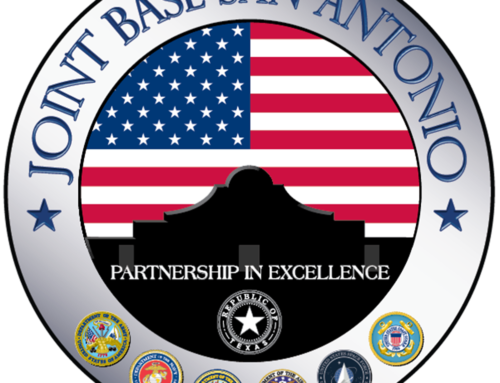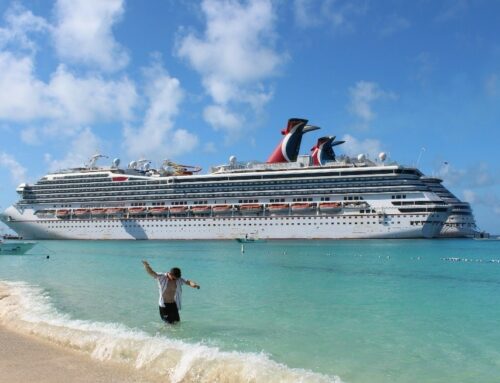The Silent Killer at Sea: Addressing the Deadly Risk of Confined Spaces in Shipping
 In the vast expanse of the world’s oceans, a silent but deadly hazard lurks within the very vessels that traverse these waters. This hazard, often overlooked yet perennially lethal, is confined spaces. The recent alarming spike in fatalities, with eight deaths in just one week, has prompted InterManager, a prominent voice in the maritime industry, to call for urgent action. As Houston maritime injury attorneys, we support this cause in the interest of seamen, longshoremen, and passengers everywhere.
In the vast expanse of the world’s oceans, a silent but deadly hazard lurks within the very vessels that traverse these waters. This hazard, often overlooked yet perennially lethal, is confined spaces. The recent alarming spike in fatalities, with eight deaths in just one week, has prompted InterManager, a prominent voice in the maritime industry, to call for urgent action. As Houston maritime injury attorneys, we support this cause in the interest of seamen, longshoremen, and passengers everywhere.
The Unseen Danger
Confined spaces on ships, a longstanding and inherent risk in maritime operations, have claimed numerous lives over the years. These spaces, such as tanks and holds, are essential to a ship’s function but pose a significant threat. One primary danger is the depletion of oxygen or anoxia, a phenomenon exacerbated by factors like rusting steel, drying paint, organic matter, and other chemical fumes. Crew members, unaware of the anoxic environment they are entering, meet tragic ends. Compounding this risk, attempts at rescue by fellow crew members also unaware of the risk can result in multiple casualties in a single incident.
Complicated by Cargo
Various cargoes intensify the risk. Coal can deplete oxygen, while refrigerants like Freon displace air. Others, like petroleum and ferrosilicon, emit toxic fumes. When coupled with a lack of standardization in safety procedures across ships, these hazards place crew members and shore workers under immense and often unrealistic pressure, leading to fatal errors.
A Persistent Challenge
Despite years of regulatory warnings and advocacy, confined space accidents remain a significant cause of death in shipping. In the past week, three seafarers and five shore workers lost their lives, contributing to a grim total of 31 fatalities this year. Since 1996, over 310 personnel have died in shipboard confined spaces.
Rethinking Strategy and Design
InterManager Secretary General Capt. Kuba Szymanski criticizes the current approach, arguing that merely blaming seafarers and providing additional training is insufficient. He emphasizes the need to understand the root causes of these decisions and the external pressures influencing them. Szymanski’s call to action is clear: the shipping industry must collectively tackle this issue.
“One death is too many but eight in seven days is ridiculous. This is an industry-wide issue which everyone in the shipping community must work together to resolve,” stated Szymanski. “It’s not enough to blame the seafarers and offer additional training. Accident investigations must delve deeper into why people make the decisions they do and examine what external pressures impact those decisions,” Szymanski said. “No one should lose their life doing their job.”
A significant part of the solution lies in design. Naval architects are urged to innovate and “design out” as much of the risk as possible. By rethinking ship safety and design with the human element in mind, the industry can take a crucial step towards preventing these needless tragedies. Some of these measures include:
- Atmosphere testing instrument for enclosed spaces in the International Convention for the Safety of Life at Sea (SOLAS), which requires ships to carry an appropriate portable atmosphere testing instrument or instruments, capable, as a minimum, of measuring concentrations of oxygen, flammable gases or vapours, hydrogen sulphide and carbon monoxide, prior to entry into enclosed spaces.
- A “standby” crew member assigned for each entry, equipped with rescue equipment such as radio and self-contained breathing apparatus
- Special protective clothing and boots
- Required training and pre-established contingency plan
(Enclosed spaces applying to these protocols include, but are not limited to, cargo spaces, double bottoms, fuel tanks, ballast tanks, cargo pump-rooms, cofferdams, chain lockers, void spaces, duct keels, inter-barrier spaces, boilers, engine crankcases, engine scavenge air receivers, sewage tanks, and adjacent connected spaces).
A Cooperative Responsibility
 The stark reality of confined space hazards in shipping is a call to action for the entire maritime community. This is not just about implementing safety protocols; this is about fundamentally rethinking how ships are built and operated. The lives of those who brave the seas for their livelihoods depend on it. As we sail forward, let us remember that safety at sea starts with awareness, empathy, and a commitment to change.
The stark reality of confined space hazards in shipping is a call to action for the entire maritime community. This is not just about implementing safety protocols; this is about fundamentally rethinking how ships are built and operated. The lives of those who brave the seas for their livelihoods depend on it. As we sail forward, let us remember that safety at sea starts with awareness, empathy, and a commitment to change.
We at the Herd Law Firm are proud to fight for maritime workers and passengers in all types of personal injury claims. As Houston maritime attorneys, we never waver in our commitment to help these maritime workers and their families when they are injured.
12/19/2023
Image source: www.gov.uk, International Maritime Organization







